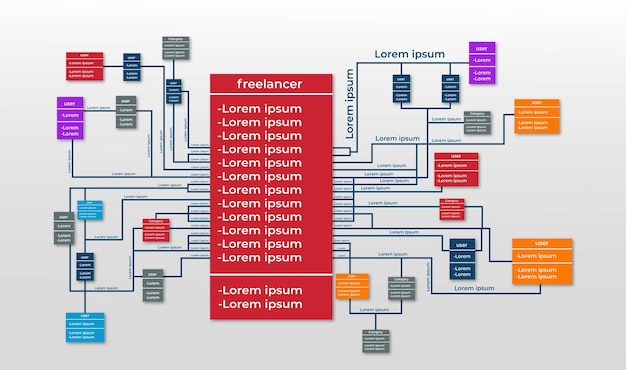Choose the Right Machine Learning Algorithm for Your Business

Choosing the right machine learning algorithm for your business needs involves understanding your business goals, data characteristics, and the trade-offs between different algorithms to optimize performance and outcomes.
Navigating the vast landscape of machine learning algorithms can feel overwhelming, especially when trying to align these powerful tools with your specific business needs. This guide will help you how to choose the right machine learning algorithm for your business needs, ensuring you make informed decisions that drive tangible results.
Understanding Machine Learning Algorithms
Machine learning algorithms are the engines that power predictive models and automated decision-making. These algorithms learn from data to identify patterns, make predictions, and improve their performance over time. However, understanding the different types of algorithms and their capabilities is crucial for successful implementation.
Types of Machine Learning Algorithms
There are several categories of machine learning algorithms, each suited for different types of tasks. Understanding these categories is the first step in selecting the right algorithm for your business.
- Supervised Learning: Algorithms that learn from labeled data to predict outcomes.
- Unsupervised Learning: Algorithms that identify patterns in unlabeled data to uncover hidden structures.
- Reinforcement Learning: Algorithms that learn through trial and error, optimizing actions to maximize rewards.
Key Considerations When Choosing an Algorithm
Before diving into specific algorithms, consider the following factors that will influence your decision. These considerations will help you narrow down your options and select an algorithm that aligns with your project requirements.
- Type of Data: Is your data structured or unstructured, numerical or categorical?
- Business Objectives: What specific problem are you trying to solve or prediction are you trying to make?
- Computational Resources: How much computing power and time do you have available for training the model?
By understanding the basics of machine learning algorithms and considering the key factors, you can begin to how to choose the right machine learning algorithm for your business needs with a solid foundation.

Supervised Learning Algorithms
Supervised learning algorithms learn from labeled data to predict outcomes. This category is best suited for tasks where you have historical data with known results, allowing the algorithm to learn the relationship between input features and output labels.
Linear Regression
Linear regression is a simple yet powerful algorithm used for predicting continuous values. It models the relationship between the input features and the output label as a linear equation.
Linear regression is interpretable and easy to implement, making it a good starting point for regression tasks.
Decision Trees
Decision trees are versatile algorithms that can be used for both classification and regression tasks. They work by recursively partitioning the data based on the values of the input features.
Decision trees are easy to visualize and understand, making them a popular choice for explaining model predictions.
Support Vector Machines (SVM)
SVMs are powerful algorithms used for classification tasks. They work by finding the optimal hyperplane that separates the data points into different classes.
- Suitable for high-dimensional data
- Effective in cases where the classes are well-separated
- Can be computationally intensive for large datasets
Naive Bayes
Naive Bayes algorithms are based on Bayes’ theorem and are commonly used for classification tasks, especially in text classification and spam filtering.
- Simple and fast to train
- Effective with high-dimensional data
- Assumes independence between features, which may not always hold true
Choosing the right supervised learning algorithm depends on the specific characteristics of your data and the nature of the problem you are trying to solve. Consider the trade-offs between interpretability, accuracy, and computational cost when making your decision. Understanding these algorithms is crucial in how to choose the right machine learning algorithm for your business needs effectively.
Unsupervised Learning Algorithms
Unsupervised learning algorithms work with unlabeled data to uncover hidden structures and patterns. This category is useful for tasks such as customer segmentation, anomaly detection, and dimensionality reduction. These algorithms can provide valuable insights when labeled data is scarce or unavailable.
K-Means Clustering
K-means is a popular clustering algorithm that partitions data into k distinct clusters, where each data point belongs to the cluster with the nearest mean (centroid).
- Easy to implement and understand
- Scalable to large datasets
- Requires specifying the number of clusters (k) in advance
Hierarchical Clustering
Hierarchical clustering builds a hierarchy of clusters by either iteratively merging smaller clusters into larger ones (agglomerative) or dividing larger clusters into smaller ones (divisive).
Hierarchical clustering provides a visual representation of the cluster structure, making it useful for exploratory data analysis.
Principal Component Analysis (PCA)
PCA is a dimensionality reduction technique that transforms high-dimensional data into a lower-dimensional space while preserving the most important information.
PCA can help reduce the complexity of the data and improve the performance of other machine learning algorithms.
Anomaly Detection
Anomaly detection algorithms identify rare or unusual data points that deviate significantly from the norm. These algorithms are useful for detecting fraud, identifying network intrusions, and monitoring equipment health.
- One-Class SVM
- Isolation Forest
- Local Outlier Factor (LOF)
Selecting the right unsupervised learning algorithm depends on the type of patterns you are trying to uncover and the characteristics of your data. Consider the interpretability, scalability, and robustness of different algorithms when making your choice. Mastering these options enhances your understanding of how to choose the right machine learning algorithm for your business needs within the unsupervised learning domain.

Evaluating Algorithm Performance
Evaluating the performance of a machine learning algorithm is crucial to ensure it meets your business objectives. Different algorithms require different evaluation metrics depending on the type of task they are designed for. This section provides an overview of common evaluation metrics for both supervised and unsupervised learning algorithms.
Evaluation Metrics for Supervised Learning
For supervised learning tasks, several evaluation metrics can be used to assess the performance of the model. The choice of metric depends on the specific nature of the task and the type of data.
Common metrics include:
- Accuracy: The proportion of correctly classified instances.
- Precision: The proportion of true positives among the instances predicted as positive.
- Recall: The proportion of true positives among the actual positive instances.
- F1-Score: The harmonic mean of precision and recall.
- AUC-ROC: The area under the receiver operating characteristic curve.
Evaluation Metrics for Unsupervised Learning
Evaluating the performance of unsupervised learning algorithms can be more challenging since there are no ground truth labels to compare against.
Silhouette Score
The silhouette score measures the compactness and separation of clusters. It ranges from -1 to 1, with higher values indicating better-defined clusters.
Calinski-Harabasz Index
The Calinski-Harabasz index measures the ratio of between-cluster variance to within-cluster variance. Higher values indicate better-defined clusters.
Interpreting Evaluation Results
It is important to interpret evaluation results in the context of your business objectives. A high accuracy score may not always be sufficient if the model performs poorly on specific classes or scenarios that are critical to your business.
Evaluating algorithm performance is an iterative process that involves fine-tuning the model and adjusting the algorithm parameters until the desired level of performance is achieved. It’s an essential step in understanding how to choose the right machine learning algorithm for your business needs, as it allows you to validate your choices and ensure they align with your goals.
Practical Steps for Choosing an Algorithm
Now that we’ve covered the key concepts and considerations, let’s delve into the practical steps you can take to choose the right machine learning algorithm for your business needs.
Define Your Business Objectives
The first step is to clearly define your business objectives. What specific problem are you trying to solve, and what outcomes are you hoping to achieve? Clearly defining your objectives will help you narrow down your options and focus on algorithms that are relevant to your goals.
Analyze Your Data
Understanding your data is crucial for choosing the right algorithm. What type of data do you have (numerical, categorical, text, image)? How much data do you have available? Are there any missing values or outliers?
Experiment with Different Algorithms
Once you have a good understanding of your data and business objectives, start experimenting with different algorithms. Try a few different algorithms and compare their performance on your data. This will help you identify which algorithms are best suited for your specific use case.
Fine-Tune Your Model
After selecting an algorithm, fine-tune the model parameters to optimize performance. This may involve adjusting hyperparameters, feature engineering, or trying different training techniques.
Iterate and Refine
Choosing the right machine learning algorithm is an iterative process. Continuously monitor the performance of your model and refine your approach as needed. Be prepared to revisit your choices and try new algorithms as your data and business objectives evolve.
Following these practical steps can significantly improve your chances of success and allow you to confidently apply how to choose the right machine learning algorithm for your business needs.
Real-World Examples
To further illustrate the process of choosing the right machine learning algorithm, let’s look at a few real-world examples from different industries. These examples will demonstrate how businesses are leveraging machine learning to solve specific problems and achieve their goals.
Example 1: Retail
A large retail chain wants to improve its customer segmentation and personalize its marketing efforts. They have a rich dataset of customer demographics, purchase history, and browsing behavior. They decided to use a K-means clustering algorithm to segment their customers into distinct groups based on their purchasing patterns.
Example 2: Healthcare
A healthcare provider wants to predict which patients are at risk of developing a particular disease. They have a dataset of patient medical records, including demographic information, lab results, and medical history. They chose to use a logistic regression algorithm to predict the probability of a patient developing the disease.
Example 3: Finance
A financial institution wants to detect fraudulent transactions in real-time. They have a dataset of transaction records, including transaction amount, location, and time. They decided to use an anomaly detection algorithm (e.g., Isolation Forest) to identify unusual transactions that may be fraudulent.
Example 4: Manufacturing
A manufacturing company wants to predict equipment failures and optimize maintenance schedules. They have a dataset of sensor data collected from their equipment, including temperature, pressure, and vibration. They chose to use a time series forecasting algorithm (e.g., ARIMA) to predict equipment failures.
These examples highlight the diverse applications of machine learning algorithms across various industries. By understanding how other businesses are leveraging machine learning, you can gain valuable insights and inspiration for how to choose the right machine learning algorithm for your business needs.
| Key Point | Brief Description |
|---|---|
| 🎯 Define Objectives | Clarify business goals to narrow algorithm choices. |
| 📊 Analyze Data | Understand data type and amount to guide algorithm selection. |
| 🧪 Experiment & Evaluate | Test different algorithms and evaluate their performance. |
| ⚙️ Fine-Tune & Refine | Optimize model parameters and continuously refine based on results. |
Frequently Asked Questions
▼
Supervised learning uses labeled data to train models for prediction, while unsupervised learning explores unlabeled data to find patterns without prior knowledge of outcomes.
▼
Data quality is crucial as machine learning models are heavily dependent on the data they are trained on; poor data quality can lead to inaccurate and unreliable results.
▼
Yes, ensemble methods combine multiple algorithms to improve accuracy and robustness, leveraging the strengths of different models to achieve better overall performance.
▼
Overfitting can be mitigated using techniques such as cross-validation, regularization, and simplifying the model to prevent it from memorizing the training data.
▼
Cloud computing provides scalable resources for data storage, processing, and model training, making it easier to handle large datasets and complex machine learning tasks efficiently.
Conclusion
Choosing the right machine learning algorithm for your business involves careful consideration of your business objectives, data characteristics, and the trade-offs between different algorithms. By following the practical steps outlined in this guide, you can make informed decisions that drive tangible results and unlock the full potential of machine learning for your business.





